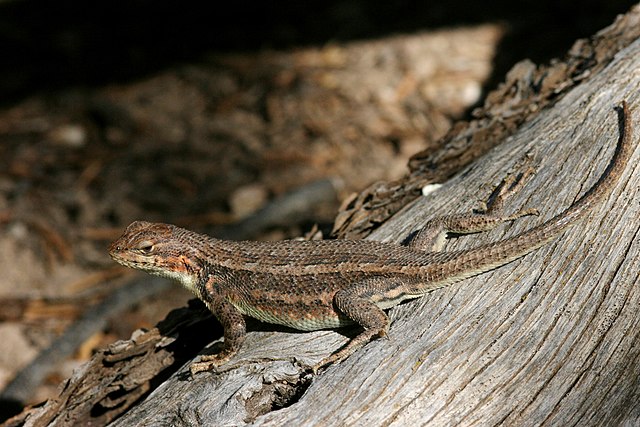Officials at the Department of Interior’s Fish and Wildlife Service (FWS) are within weeks of deciding whether to list a small, light-brown lizard as either threatened or endangered under the Endangered Species Act (ESA).
The dunes sagebrush lizard was proposed for listing under the ESA in late June, giving the public 60 days to submit comments to the FWS. Swamped by comments opposed to the listing, the FWS extended the comment period for an additional 30 days, until Oct. 2. In 2018, the Center for Biological Diversity CBD) petitioned the FWS to add the lizard to the endangered species list, and – after five years of study and bureaucratic inertia – a final decision is expected this fall.
As fate would have it, the lizard’s habitat in southeastern New Mexico and West Texas overlaps with the Permian Basin, home to America’s most productive oil and gas fields. The Permian Basin produces up to 5.8 million barrels of oil per day and has a sizeable impact on the economies of both states.
Fearful that an ESA listing for the lizard would impose strict land-use restrictions on the area, the oil and gas industry, joined by cattle ranchers, has argued that voluntary community conservation efforts to protect the creature are more effective than the heavy hand of the ESA.
In comments submitted Aug. 25 to the FWS, Tim Tarpley, president of the Energy Workforce and Technology Council, said the listing would impede planning and cause delays for the energy sector without benefiting the lizard. The council represents 250 companies and over 600,000 workers, he noted.
Voluntary Conservation Agreements
Tarpley also pointed out that about 1.9 million acres of land in New Mexico are enrolled in what are known as candidate conservation agreements, under which landowners undertake certain practices that protect the lizard’s habitat, obviating the need for ESA-style land-use restrictions.
“While the Sagebrush Lizard favors the welcoming landscape of Texas and New Mexico, this same habitat plays home to our nation’s most critical oil and gas developments,” he said in his comments (Carlsbad Current Argus, Sept. 12). “Under these agreements, the industry has voluntarily committed to implementing practices that reduce or even remove threats to the lizard.”
“Placement of the Dunes Sagebrush Lizard on the endangered species list will further reduce production and development opportunities across our robust energy industry jobs in the region and infringe on property rights,” Tarpley added.
Kathleen Sgamma, president of the Western Energy Alliance, voiced similar concerns in her Aug. 4 comments to the FWS. “The proposed Rule stands to have a significant impact on Alliance members’ business planning and operations by increasing operational costs, delaying project timeframes, and limiting or precluding operations in certain areas.”
The New Mexico Cattle Growers Association also urged the FWS to forego a listing, citing its effect on agriculture. “Given the extensive work that has been done to protect this species in this state and the effectiveness those actions have had, it would be improper to list the dunes sagebrush lizard as threatened or endangered in New Mexico,” Loren Patterson, the association’s president, wrote in his comments, as reported by the Carlsbad Current Argus.
Adult dunes sagebrush lizards are about 2.5 inches long and spend their lives in the region’s low-lying shinney oak shrubs, where they hunt insects and spiders and have some protection from the weather and predators. Their habitat is the second-smallest of any lizard species in North America.
“We won’t stand by while the last dunes sagebrush lizards disappear,” said the Center for Biological Diversity’s Michael Robinson in a statement last year. “Even as the oil and gas industry ruins our climate, it’s also destroying the lizard’s last home. Protection under the Endangered Species Act is this unique animal’s last hope.”
The Center for Biological Diversity may just get its way. Biden administration appointees at the FWS are every bit as hostile to the oil and gas industry and cattle ranchers as is the CBD. Adding the lizard to the endangered species list will reduce fossil-fuel production in the Permian Basin, something both want.
